This is the Italeri 0211 kit in 1/35 scale, of the ‘German Panzerjäger Elefant’.
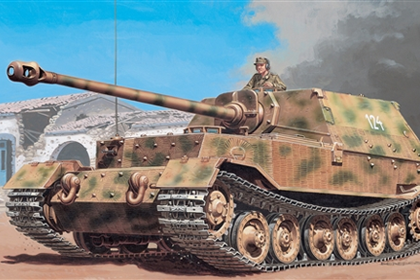
This is the Italeri 0211 kit in 1/35 scale, of the ‘German Panzerjäger Elefant’.


Aftermarket plastic wheels for my German vehicles, in 1/35 scale.
Please verify the vendor’s website, before using the information below
Panser III |
|||||||
| Pz.Kpfw.III, Ausf.A | A-6 | ||||||
| Pz.Kpfw.III, Ausf.B | A-6 | ||||||
| Pz.Kpfw.III, Ausf.E | A-6 | ||||||
| Pz.Kpfw.III, Ausf.F | A-6 | ||||||
| Pz.Kpfw.III, Ausf.G | A-6 | ||||||
| Pz.Kpfw.III, Ausf.H | A-6 | ||||||
| Pz.Kpfw.III, Ausf.J, Initial | A-6 | ||||||
| Pz.Kpfw.III, Ausf.J | A-6 | ||||||
| Pz.Kpfw.III, Ausf.K | A-6 | ||||||
| Pz.Kpfw.III, Ausf.L | A-6 | ||||||
| Pz.Kpfw.III, Ausf.M | A-6 | ||||||
| Pz.Kpfw.III, Ausf.N | A-6 | ||||||
Panzer IV |
|||||||
| Pz.Kpfw.IV, Ausf.A | |||||||
| Pz.Kpfw.IV, Ausf.B | |||||||
| Pz.Kpfw.IV, Ausf.C | |||||||
| Pz.Kpfw.IV, Ausf.D | |||||||
| Pz.Kpfw.IV, Ausf.E | |||||||
| Pz.Kpfw.IV, Ausf.F | |||||||
| Pz.Kpfw.IV, Ausf.F2 | |||||||
| Pz.Kpfw.IV, Ausf.G | |||||||
| Pz.Kpfw.IV, Ausf.H | |||||||
| Pz.Kpfw.IV, Ausf.J | |||||||
| Pz.Kpfw.IV, Bergepanzer | |||||||
| Pz.Kpfw.IV, Brückenleger | |||||||
| Pz.Kpfw.IV, Möbelwagen | |||||||
| Pz.Kpfw.IV, Ostwind | |||||||
| Pz.Kpfw.IV, Wirbelwind | |||||||
Heavy |
|||||||
| Tiger I, Initial | |||||||
| Tiger I, Early | |||||||
| Tiger I, Middle | |||||||
| Tiger I, Late | |||||||
Destroyer |
|||||||
| Elefant | |||||||
| Nashorn | |||||||
Assault |
|||||||
| StuG III, Ausf.A | A-6 | ||||||
| StuG III, Ausf.B | A-6 | ||||||
| StuG III, Ausf.C/D | A-6 | ||||||
| StuG III, Ausf.D | A-6 | ||||||
| StuG III, Ausf.E | A-6 | ||||||
| StuG III, Ausf.F | A-6 | ||||||
| StuG III, Ausf.F/8 | A-6 | ||||||
| StuG III, Ausf.G | A-6 | A-7 | |||||
| StuG III, Ausf.G – L/48 | A-6 | A-7 | |||||
| StuG IV | |||||||
| StuG IV, Sd.Kfz.167 | |||||||
| StuG IV – L/48 | |||||||
| StuG IV, Sd.Kfz.1 | |||||||
| Sturmtiger | |||||||
Half-track |
|||||||
| Sd.Kfz.7 | |||||||
| Sd.Kfz.9, Famo |
Source: Modelkasten
This is the Lifecolor CS-22 paint set, with colors for ‘Axis Tank Interiors’.
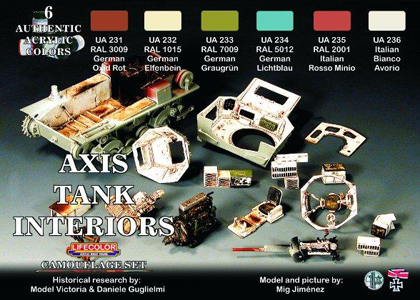
![]()
This is the Eduard, photo etch sets for the ‘German 15 cm s.IG.33 (Sf) auf Pz.Kpfw.I Ausf.B‘ from Alan (Might also fit the Dragon kit).
Detail set |
Alan |
||||
| (35 813) | Basic | ||||
Source: Eduard
This is the Dragon 6259 kit in 1/35 scale, of the ‘German 15cm s.IG.33 (Sf) auf Pz.Kpfw.I Ausf.B’, sometimes referred to as the Sturmpanzer I Bison.
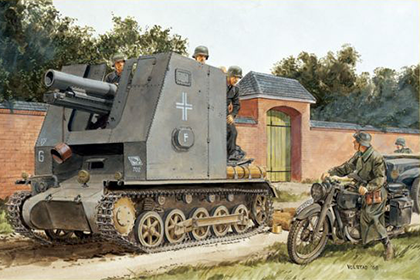
It was recognized early on that mobile artillery could provide invaluable fire support to tank units, so the mounting of a 150mm s.IG.33 infantry gun resulted in a vehicle known as an s.IG.33 (Sf) auf Pz.Kpfw.I Ausf.B. The gun was mounted in a tall, boxy superstructure, though the chassis of the Panzer I was overstressed by the extra weight. The armored shield was only 10mm thick and could only offer front and side protection, plus there was no space for spare ammunition to be carried.
Ultimately, this ungainly and top-heavy artillery piece wasn’t a great success and only 38 were converted in February 1940 by Alkett. These guns served in the Battle of France and beyond, though as the war progressed, the 150mm s.IG.33 gun would be mounted on alternative chassis too.

This is the Voyager Model, photo etch sets for the ‘German RSO/01‘ from Dragon.
Detail set |
Dragon |
||||
| (35 691) | Basic | 6691 | |||
Source: Voyager Model
This is the Dragon 6133 kit in 1/35 scale, of the ‘German Ferdinand’.
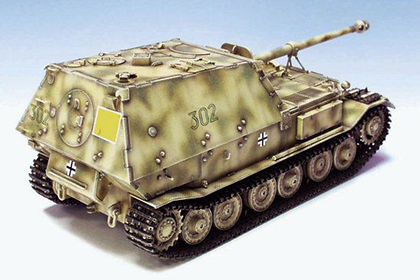
Elefant (German for “elephant”) was a Schwerer Panzerjäger (“heavy tank destroyer”) of the German Wehrmacht used in small numbers in World War II. It was built in 1943 under the name Ferdinand, after its designer Ferdinand Porsche.
In 1944, after modification of the existing vehicles, they were renamed Elefant. The official German designation was Panzerjäger Tiger (P) and the ordnance inventory designation was Sd.Kfz.184.
This is the Dragon 6301 kit in 1/35 scale, of the ‘German Panzerkampfwagen IV, Ausf. E – Vorpanzer’.
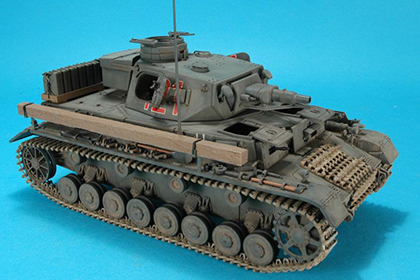
It differed from Zusatzpanzerung because it was spaced from the underlying armour, whereas Zusatzpanzerung was fitted directly onto the armour underneath.Vorpanzer was designed to defeat 105mm HEAT projectiles, and to strip off the piercing caps of APC and APCBC projectiles which would then shatter on the FH armour behind.
It also caused any HE filler in such projectiles to detonate prematurely.
This is the Dragon 6691 kit in 1/35 scale, of the ‘German RSO/01 Type 470’.

The acronym RSO stands for Raupenschlepper Ost, which translates as ‘Caterpillar Tractor East’. The terrible muddy and icy conditions experienced on the Eastern Front convinced Germany of the need for a highly mobile, tracked vehicle.
Steyr proposed the RSO and it immediately became a popular vehicle thanks to its mobility and reliability. In all, about 23,000 RSO vehicles were produced by a range of manufacturers.
The original version had a pressed-steel cab and a typical truck-style cargo bed at the rear. It was powered by a Steyr 85hp V8 engine that offered a top speed of 30km/h. This kit depicts the standard RSO/01, the type with rounded steel cab being the best known of all the versions used by Germany.
This is the Tamiya 35 177-4100 kit in 1/35 scale, of the ‘German Sturmtiger, 38cm Assault Mortar’.
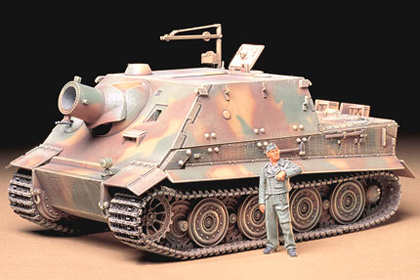
In order to withstand the heavy recoil of up to 40 tons, the Tiger I’s sturdy chassis was selected. A decision was made to use only those chassis/hulls that were sent back from the front, so that new production of the tank would not be affected.
A fighting compartment was formed of a boxlike superstructure which was bolted to the lower hull itself. Its armor plate measured 150mm thick at the front and 80mm on the sides. Later, a steel ring counterweight was added to the mouth of the mortar barrel on some vehicles to make elevation aiming easier.
The mortar’s huge self propelled rocket projectile was 149cm long and weighed 330kg. For loading these heavy rockets aboard, a hand cranked crane was mounted to the right aft side of the upper hull. Due to the rocket’s size, storage space was very limited and only 14 shells could be carried.
Conversion production of the Sturmtiger began in August 1944, and by the end of December a total of 18 units had been completed and sent to the front for action during the final stage of the conflict.